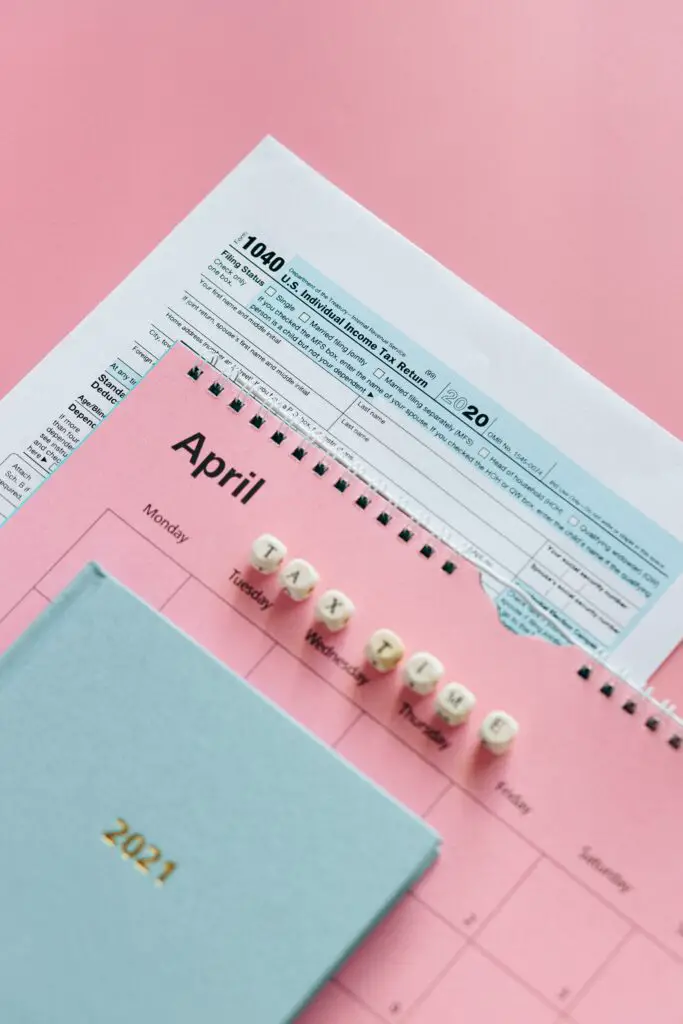Introduction
Table of Contents
- Introduction
- What Does “Profit First” Mean?
- The Importance of a Budget According to Profit First
- How the Profit First approach transforms The Traditional Budget
- Implementing a Profit-First Budget
- Does Everyone Really Need A Budget?
As individuals, we often find ourselves questioning the necessity and importance of a budget. The constant tracking, the limits, the “do I really need this?” moments – they can all feel overwhelming. On the other hand, for businesses, a budget is typically viewed as a fundamental tool, a blueprint for financial success. But whether it’s personal or business finance, there’s an age-old debate that never seems to fade: Do we really need a budget?
To answer this question, we turn to a somewhat unconventional approach in the world of finance, proposed by Mike Michalowicz in his transformative book, “Profit First”. Rather than adhering to the traditional sales-minus-expenses-equals-profit formula, Michalowicz flips the script, advocating that profits should be prioritised and secured first, with expenses adjusted to fit what’s left. It’s a paradigm shift that challenges many established norms of budgeting and financial management.
In this article, we’ll dive into the Profit First model, its implications for budgeting, and how it can fundamentally change how you perceive and handle your finances. So, if you’ve ever found yourself wondering if a budget is truly necessary, or if there’s a different way to manage your financial health without feeling constrained, this discussion might offer a fresh perspective.

What Does “Profit First” Mean?
To truly understand the weight of the question, “Do I really need a budget?” we need to first comprehend what Mike Michalowicz means by “Profit First”. This approach disrupts traditional financial management practices with a powerful, yet simple concept.
Most businesses, and indeed individuals, operate on the principle of sales minus expenses equals profit. Money comes in, bills get paid, and whatever is left over is considered profit. It’s a standard formula, but it inherently prioritizes expenses while leaving profit as an afterthought. In fact, in many instances, this structure results in no profit at all, as expenses conveniently rise to meet income.
Here’s where Profit First flips the script. Michalowicz proposes an alternate model: sales minus profit equals expenses. This means, the moment money comes in, a predetermined percentage is immediately put aside as profit. Only then are the remaining funds allocated to expenses. It’s a fundamental shift that forces businesses and individuals to live within their means, by adjusting expenses according to what’s left after profit is secured.
This model brings profits to the forefront, transforming them from a mere chance occurrence to a deliberate, consistent outcome. It’s not just about survival, but about thriving, fostering growth, and achieving financial sustainability. This is the crux of the Profit First model – prioritize and protect your profits, then adapt your expenses accordingly. And while it may sound counterintuitive, it has proven to be a game changer for many businesses, and can also be applied to personal finance with equally impactful results.

The Importance of a Budget According to Profit First
In the traditional sense, a budget serves as a financial roadmap, guiding us on how to allocate our resources efficiently. It helps ensure that we live within our means and aids us in reaching our financial goals. The Profit First approach takes this concept and amplifies its importance, not only as a roadmap but as a critical tool for achieving consistent profitability.
In the Profit First model, the budget is not just about tracking where your money goes – it’s about strategically directing your money to serve your best interests. The first step is to determine what percentage of income you will allocate to profit, effectively putting a cap on the remaining funds available for expenses. This action requires a well-planned budget, that aligns your spending habits with your financial goals, ensuring you still meet your obligations while maintaining profitability.
Without a budget, the Profit First method becomes nearly impossible to implement effectively. Without a clear delineation of where your money should go, you risk falling into the trap of spending first and saving what’s left – exactly what Profit First aims to avoid. A well-structured budget ensures that your financial decisions align with your profit goals, and not the other way around.
Additionally, a budget helps curb overspending, a problem that can become even more apparent when implementing the Profit First approach. Since this method operates on reduced funds for expenses, a budget becomes an essential tool to manage and control spending, ensuring that your financial behaviour supports your profit priorities.
In essence, the Profit First approach emphasizes the budget as a dynamic tool that not only tracks spending but also helps create a healthier financial landscape by placing profit at its core.

How the Profit-First approach transforms The Traditional Budget
Certainly, let’s explore how the Profit First approach transforms the traditional budget:
In conventional budgeting, income is typically divided into various categories for spending – housing, groceries, utilities, entertainment, and so on, with savings or profits often landing last on the list. This method tends to prioritize spending, often leaving little to nothing for savings or profit.
The Profit First model reshapes this traditional budgeting perspective. Rather than treating profit as an afterthought, it is moved to the forefront, essentially becoming the first “expense” to be paid out from your income. This shift in priorities can be transformative, and it has significant implications for how you structure and implement your budget.
Firstly, it forces an immediate reckoning with expenses. By taking profit first, the remaining amount available for expenses is automatically reduced. This limitation encourages a more disciplined and mindful approach to spending, prompting you to analyze and potentially cut down on unnecessary expenses. It nudges you to find efficiencies and make more prudent financial decisions.
Secondly, it instils a proactive savings habit. In a traditional budget, savings or profits are typically what’s left after all expenses have been paid. But with Profit First, savings are not a residue; they are a priority. This encourages consistent savings, builds financial resilience and promotes financial growth.
Thirdly, it provides a clearer financial picture. By flipping the equation to sales minus profit equals expenses, you get a more realistic view of what your true operating costs should be, and this can lead to more sustainable financial habits.
In short, Profit First transforms the traditional budget by changing the order of financial priorities. It fosters a mindset that values profit and savings, ensuring they are not just an optional outcome, but a consistent, intentional part of your financial behaviour.

Implementing a Profit-First Budget
Making the shift to a Profit First budget might initially seem daunting, but by following these steps, the transition can be smoother:
1. Determine Your Profit Target: Start by determining what percentage of your income you wish to allocate to profit. This could be based on your financial goals, such as saving for retirement or growing your business. The key is to make it a meaningful but achievable target.
2. Allocate for Taxes and Owner’s Pay: Apart from profits, consider other essential allocations like taxes and owner’s pay (if applicable). These should also be deducted from the total income before planning for expenses.
3. Assess Current Expenses: Review your current expenses. This gives you a clear understanding of your spending habits and helps you identify areas where you can reduce costs.
4. Establish Bank Accounts: To effectively implement Profit First, Michalowicz recommends setting up separate bank accounts for profit, owner’s pay, tax, and operating expenses. This ensures that the money allocated to each category remains separate and isn’t accidentally spent.
5. Distribute Income: When income arrives, distribute it among the various accounts based on the percentages you’ve decided. Do this consistently, treating the profit allocation as a non-negotiable expense.
6. Adjust Your Spending: With the remaining money, after allocations for profit, taxes, and owner’s pay, review and adjust your spending. The aim is to run your personal or business finances within this remaining amount.
7. Review Regularly: Profit First isn’t a set-it-and-forget-it system. Regular reviews are crucial. Monitor your budget, adjust your allocations if necessary, and ensure that you’re sticking to the plan.
Adopting a Profit First budget may require significant changes to your financial habits, and it might seem challenging at first. However, with consistent application and regular review, this approach can help you build a more sustainable and profitable financial future.

Does Everyone Really Need A Budget?
The short answer to the question, “Does everyone really need a budget?” is, in most cases, yes. However, the intensity, complexity, and structure of the budget can vary greatly based on individual circumstances and financial habits.
Some individuals or businesses may find that they can manage their finances adequately without a stringent budget. This is particularly true for those with a high income-to-expense ratio, where their income significantly exceeds their spending, leaving a comfortable financial buffer. But even then, without a budget, there might be missed opportunities for saving, investing, or identifying financial leaks.
Conversely, for most people and businesses, particularly those with tight margins or fluctuating income, a budget is a crucial tool. It provides a roadmap of their financial landscape, helping them make informed decisions about spending, saving, and investing. This becomes even more critical when implementing a model like Profit First, where strategic allocation of income becomes the core of financial management.
Regardless of the model used, the underlying principle remains the same: being intentional and informed about where your money goes is key to financial health. A budget, in whatever form it takes, serves this purpose. It provides a clear picture of your financial health, helps you set and achieve financial goals, and gives you control over your money rather than letting it control you.
It’s also important to note that budgeting doesn’t necessarily imply restriction. Instead, it should be viewed as a tool that provides freedom – freedom from financial stress, from living paycheck to paycheck, and freedom to make conscious decisions about how to use your resources effectively.
So, while not everyone may need a detailed, line-by-line budget, having some form of budgeting system is beneficial for almost everyone. Whether it’s a traditional budget, the Profit First model, or another method, it’s essential to find a budgeting system that suits your individual needs and encourages sound financial practices.
Conclusion
In conclusion, budgeting is more than just a simple financial tool; it is a roadmap for financial health and success. We’ve delved into the Profit First model by Mike Michalowicz and explored its transformative power over traditional budgeting methods. It urges us to rethink the way we handle our finances, shifting profit from a mere afterthought to the central focus.
By prioritizing profit, this approach fundamentally changes the budgeting process. It encourages discipline, transparency, and efficiency in spending, promoting a healthier financial landscape. The Profit First model not only brings to light the importance of budgeting but also magnifies its role in achieving consistent profitability.
However, every individual and business has unique financial circumstances and needs. So, while a Profit First budget might work wonderfully for some, it may not suit everyone. What’s essential is the underlying principle it teaches us: to be intentional about where our money goes, to prioritize savings and profitability, and to manage expenses within the remaining means.
I encourage you to reflect on your current budgeting habits in light of the insights shared. Do they promote financial health and growth? Are your profits consistently secure? Are your financial decisions intentional, informed, and in alignment with your financial goals?
Remember, a budget isn’t designed to restrict you; instead, it should empower you. Whether it’s through the traditional model or the Profit First approach, find the budgeting system that serves your financial well-being and helps you create a sustainable and profitable future.

One response
[…] Do I Really Need a Budget? (Hint: Most of The Time) 5 Lessons from Profit First by Mike Michalowicz Mike Michalowicz shows us how to budget for our business with Profit First […]